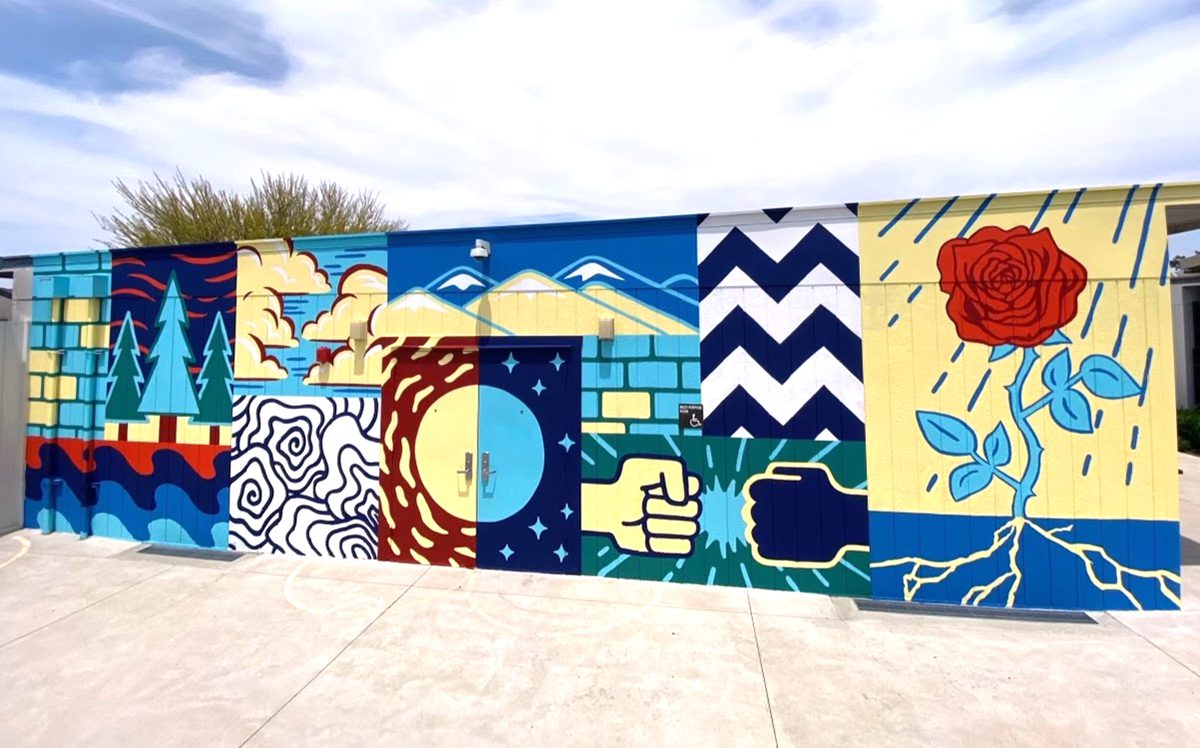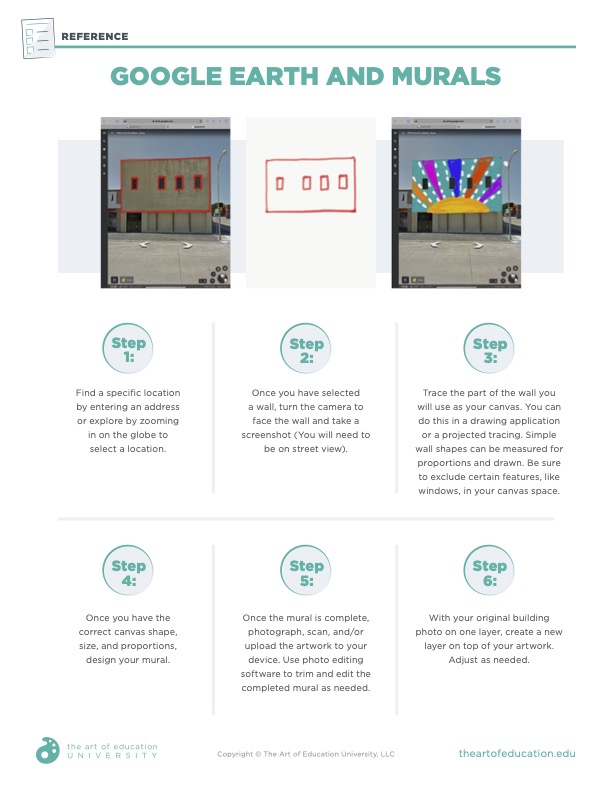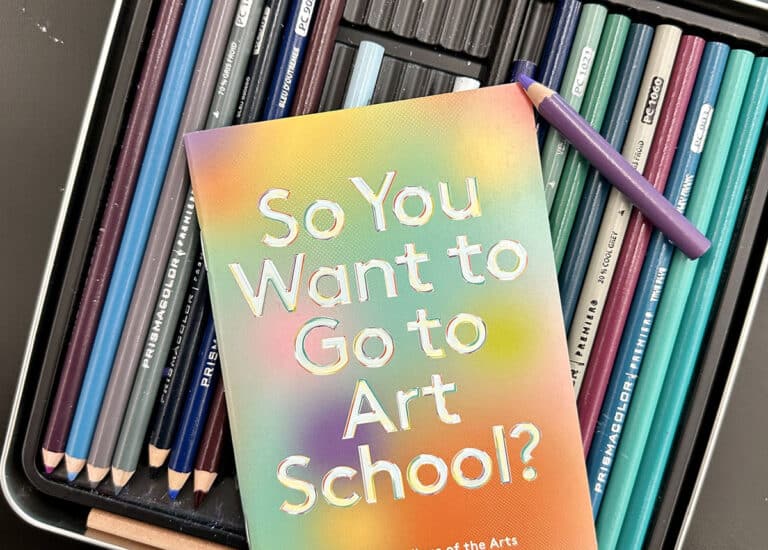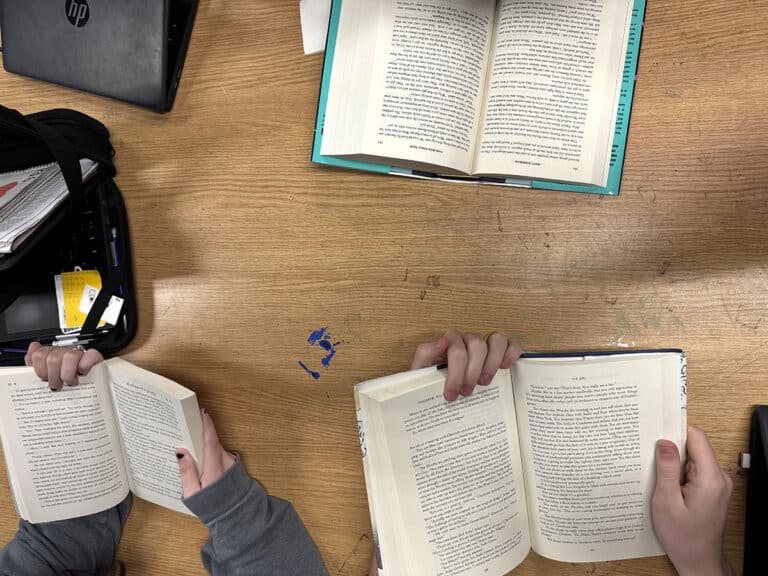The spring or end-of-year art show is often a big deal for art teachers. While it is convenient to host these events at your school, have you ever considered an alternative site for exhibiting work? Displaying student work outside of your school building is one way to expand your program’s reach and connect with your community. Art placed in public spaces supports both of these goals by inviting visitors to slow down, interact with others, and take an interest in their community.
Let’s investigate four ways you can connect with your community during art show season.
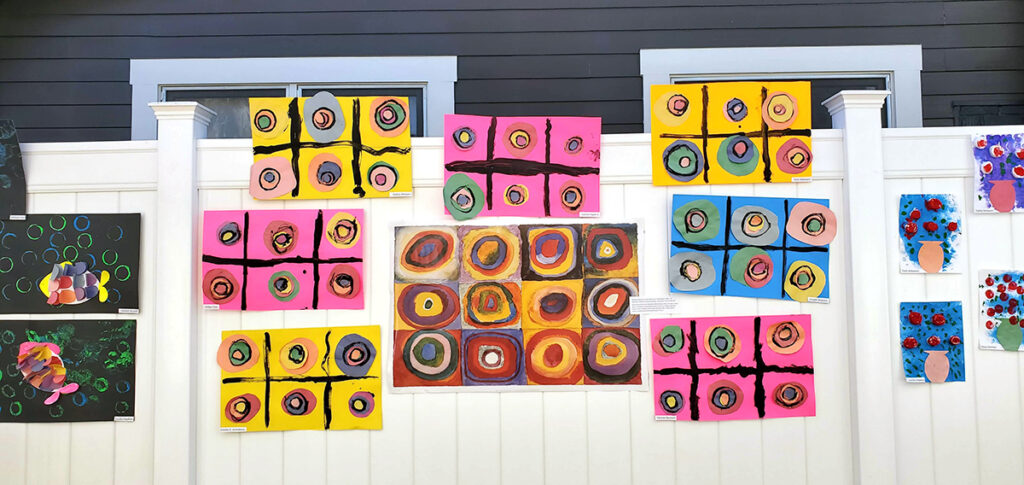
Public spaces make novel backdrops.
When thoughtfully integrated into communal areas, works of art can have the powerful effect of drawing people near. Much like a storefront window, shaking up the daily view can interest passersby and encourage them to stop and see what’s new. With that in mind, how can you be proactive and get your students’ work in the public eye to invite connection with their community?
1. Display art on fences.
Long chain-link fences are often necessary when a site is under construction. A few zip ties, a pair of scissors, permission, and some eager volunteers are all you need to install artwork on these fences. In the image below, art educators worked with a business whose lot was under construction, creating a win-win partnership and communal enjoyment. Businesses will benefit from the crowd your display attracts, locals will appreciate viewing works of art instead of a construction eyesore, and you will gain a new display space!

If you notice new construction, ask the nearby businesses about installing art on the fencing around their space. There’s a strong chance you can create a temporary art installation by connecting with business owners. As a bonus, you can discuss hosting culminating events at the site that will support those small businesses with the influx of foot traffic.
Some cities already have programs to support putting art on construction fences. One example where you can apply is West Hollywood’s Art on Construction Fence Program. Be on the look-out for similar local programs to learn about calls for artists to display art on fences in your community.
2. Secure space with business improvement districts.
If you are not familiar with business improvement districts (BIDs), now is a great time to learn more. Luke Spray, Associate Director of Strategic Partnerships with the San Francisco Parks Alliance, is an example of someone who partners with BIDs. Professionals like Spray connect businesses that have available spaces with teachers and artists to display artwork. “It’s easier to forge these connections if you seek me out,” Spray says. “I have always loved collaborating with teachers and motivated educators who get stuff done when given the right opportunities,” he adds. Additionally, these organizations can amplify publicity for your exhibition through their networks and social media, drawing more people to your event. Hello, art advocacy opportunities!
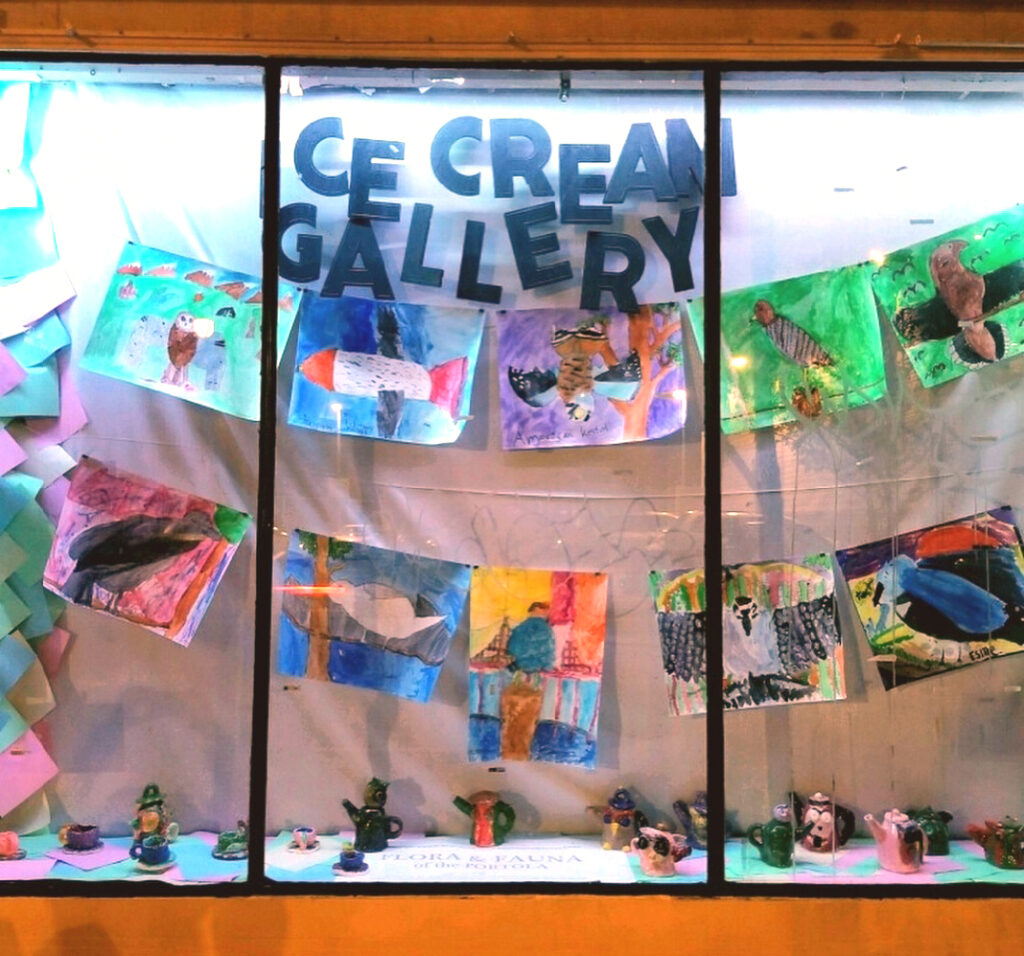
You can also initiate contact with these willing partners by searching out local BIDs by city or neighborhood name. Don’t forget to look for local business groups on social media! Another option is to go through your local Chamber of Commerce, which can point you in the right direction.
The experience is what they will remember.
Community members and students’ families are often invited to private events and exhibitions to see the completed work. Unfortunately, they rarely get a peek behind the scenes or an opportunity to see students’ work receive public recognition. One of art’s greatest gifts is a positive shared experience. How can you share that joy in more accessible ways?
3. Invite community participation.
Consider asking the community to participate in collaborative mural painting. You will bring people together to create an impressive work of art. Imagine how participants will feel as they regularly pass by the mural they helped make! Undoubtedly, inviting new participants to take ownership of the final product will remind them of the value and necessity of arts education.

Art organizations, like ArtReach, are experts at community partnerships and inviting others to paint alongside them. Isabel Halpern, ArtReach’s Mural Program Manager, agrees that such interaction can be quite powerful. “There is incredible value when involving a whole community in collaborative art,” she says. “With a shared task of painting large-scale, side-by-side, walls are let down. Conversations emerge. Lasting bonds are formed.”
With some planning, you can facilitate an open day of painting with community members. You can also initiate a campaign to survey the families of every student at your school to ask for input about the mural’s artistic direction. As the time nears, spread the word and invite the school community to help with painting.
Check out this step-by-step resource from our Stories From Latino Artists Collection in FLEX Curriculum for a fun way to get started with mural brainstorming.
Download Now!
4. Partner with established entities.
By partnering with well-established groups, you can showcase student work and demonstrate the opportunities art can provide. One surefire way to get your students’ art in front of a new audience is to partner with a recognizable name. Look for large corporations, local agricultural festivals, and art organizations to find a new and exciting space for exhibition.
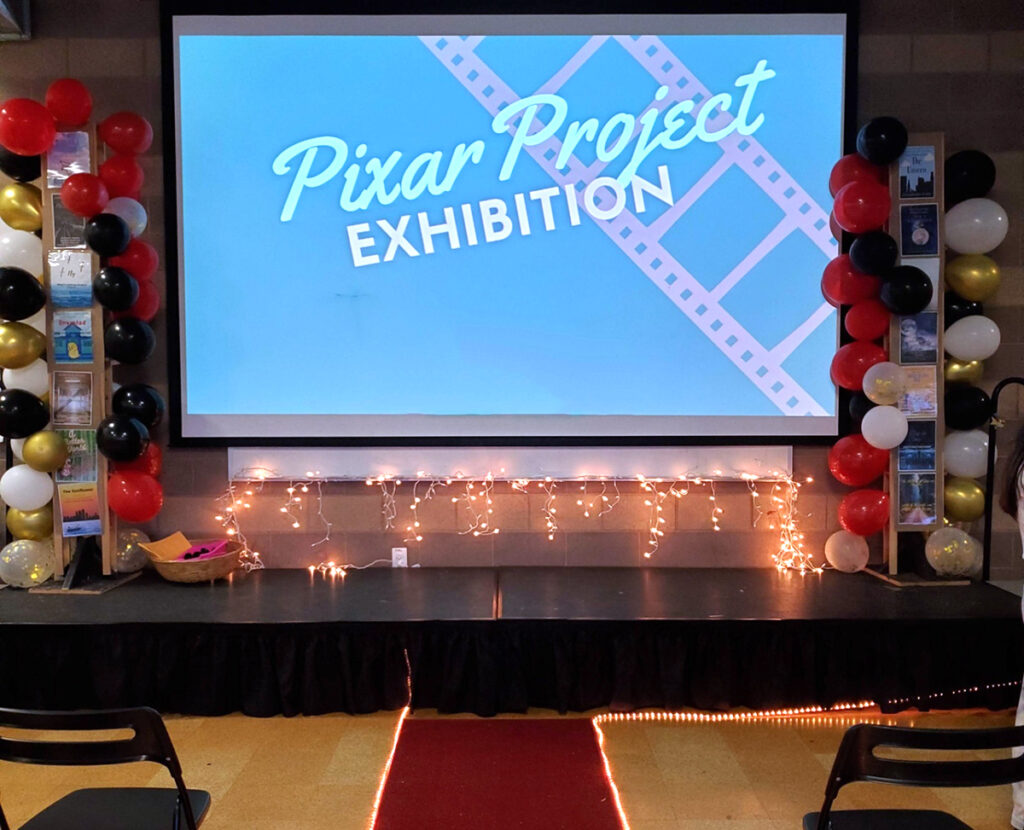
The image above is from a school-site exhibition collaborating remotely with Pixar’s Story Xperiential, a short film-making experience. Teachers created an in-person, indoor-outdoor film festival in compliance with Covid protocols. A cool aspect for the students was when Pixar announced their names on the Story Xperiential website, amplifying their projects. Seeing their names celebrated with such a major company was mind-blowing and surreal for the students.
Finding corporate partnerships requires signing up for their newsletters and emails and following them on social media. Joining your local and regional art organizations and state chapters can connect you with seasonal festivals held in your area. These are great venues to display more student artwork to an eager audience.
The benefits of connecting with the community can last far longer than any temporary art show. Publicly placed art encourages ongoing conversation, creates mutually beneficial relationships with local businesses, and makes student work more visible. As you plan your culminating art events and exhibitions this spring, we hope you consider these ideas to utilize public spaces and invite your community to connect with your students’ art.
How do you collaborate with local partners to display artwork in your community?
What novel ideas have you come up with to exhibit student work outdoors?
Magazine articles and podcasts are opinions of professional education contributors and do not necessarily represent the position of the Art of Education University (AOEU) or its academic offerings. Contributors use terms in the way they are most often talked about in the scope of their educational experiences.

